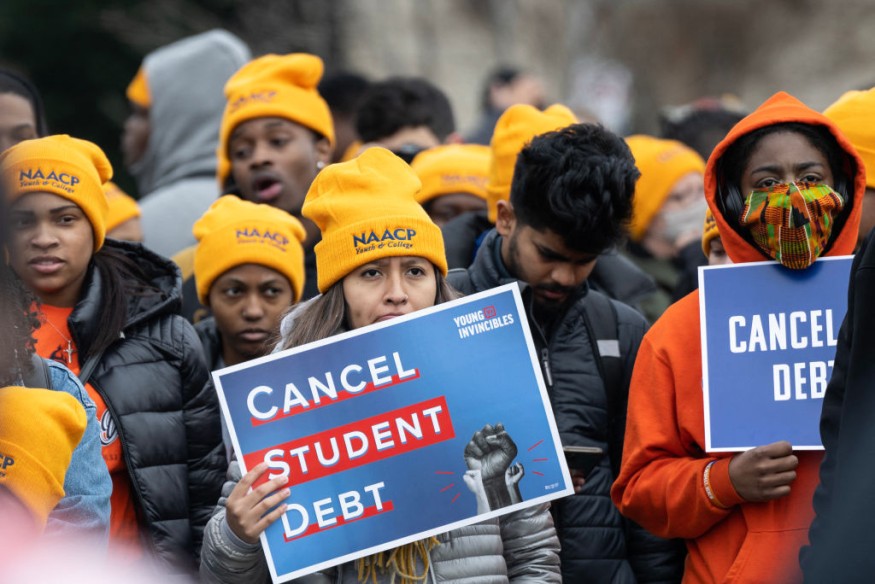Uncertainty Clouds Future of Student Loan Relief After Program Expires
Over 3.7 million Americans have received over $136 billion in student loan forgiveness, as per new Education Department data, part of the Biden administration's efforts to increase access to forgiveness programs.
The IDR Account Adjustment, a temporary program, allows the Education Department to apply previous repayment terms to income-driven repayment plans, benefiting borrowers seeking student loan forgiveness.
Other temporary initiatives like Fresh Start and the on-ramp transition program offer short-term relief, with Fresh Start helping defaulted borrowers, and the on-ramp providing flexibility, both set to expire in September 2024. Congressional action may be required for more significant and lasting reforms.
According to new data provided by the Education Department, over 3.7 million Americans have collectively received over $136 billion in student loan forgiveness-an unparalleled degree of relief.
As part of its efforts to relax regulations and increase access to student loan forgiveness under important programs, the Biden administration has executed the discharges through a number of so-called "targeted" initiatives. Other student debt relief programs, such as those that offer flexibility in returning to payments and a fresh route out of default, are now available to more students.

However, some of these measures are scheduled to expire as the year goes on, while some may remain in place for a long (at least one new proposal for loan forgiveness is being developed and may be unveiled later this spring).
IDR Account Adjustment
The IDR Account Adjustment has been one of the Biden administration's most important achievements. The Education Department may apply previous repayment terms, along with a few delay and forbearance periods, to a borrower's 20- or 25-year student loan forgiveness terms for income-driven repayment plans under this temporary program. These time frames may also be applied toward Public Service Loan Forgiveness, or PSLF, a comparable program that forgives loans for people who dedicate their careers to working for nonprofits or the public sector in as little as ten years.
For some borrowers to be eligible for relief under the account adjustment or to maximize the advantages available, they must combine their loans through the federal Direct consolidation program (such as those with non-government owned FFEL or HEAL loans). A full discharge may be available to those who, as a consequence of the account adjustment, acquire enough IDR or PSLF credit to meet their debt forgiveness milestone. Some will be able to reduce the amount of time they have left to repay.
IDR Account Adjustment, however, is merely temporary. April 30, 2024 is the deadline for consolidation (for those who require it). Additionally, the Education Department plans to disclose the IDR payment figures once the account adjustment is fully implemented later this summer. Following that, the "regular" rules regulating IDR plans will resume.
Fresh Start
Fresh Start, another short-term Biden administration initiative, is underway. Borrowers who are in default on their federal student loans can get their loans back into good standing by following the Fresh Start method.
Similar to the IDR Account Adjustment, the Fresh Start program is a short-term endeavor. All defaulting debtors are eligible to receive these benefits through at least September 2024, per published instructions. However, debtors must use the Fresh Start program to get out of default in order to have long-term access to these advantages.
On-Ramp
This September marks the end of the "on-ramp" transition program, another temporary student loan arrangement. The purpose of the on-ramp is to provide debtors short-term flexibility in the first year after the return to payments, which started this September.
However, the on-ramp phase will terminate in September in accordance with Fresh Start. This implies that at that time, failing to make payments on student loans will prevent them from being forgiven altogether and cause credit damage and default, both of which can have dire repercussions for borrowers.
Will Congress Step In?
In June 2023, the U.S. The Health and Economic Recovery Omnibus Emergency Solutions (HEROES) Act of 2003 prohibited the Biden-Harris administration's intention to waive up to $10,000 in student loan debt per borrower-and up to $20,000 for Pell Grant recipients-according to the Supreme Court's decision in Biden v. Nebraska. On the same day, President Joe Biden declared that his administration will continue to fight for debt relief for debtors by pursuing a wide debt relief program under the Higher Education Act (HEA) of 1965, a separate legislative authority.
Changes to federal student assistance regulations must go through a more drawn-out process known as "negotiated rulemaking," or "NegReg" for short, as required by the HEA. In order to establish new or updated regulations, this process will bring together stakeholders from a variety of impacted groups, including student loan borrowers, loan servicers, colleges and universities, and legal support organizations.
Although the Biden-Harris administration is making every effort to enhance the student loan program and provide borrowers with a nationwide cancellation, more significant and long-lasting reforms could eventually need to come from Congress in the form of new legislation.
Related Article: Biden Administration Announces Additional $4.9 Billion in Student Loan Debt for 73,600 Borrowers
Copyright © MoneyTimes.com












